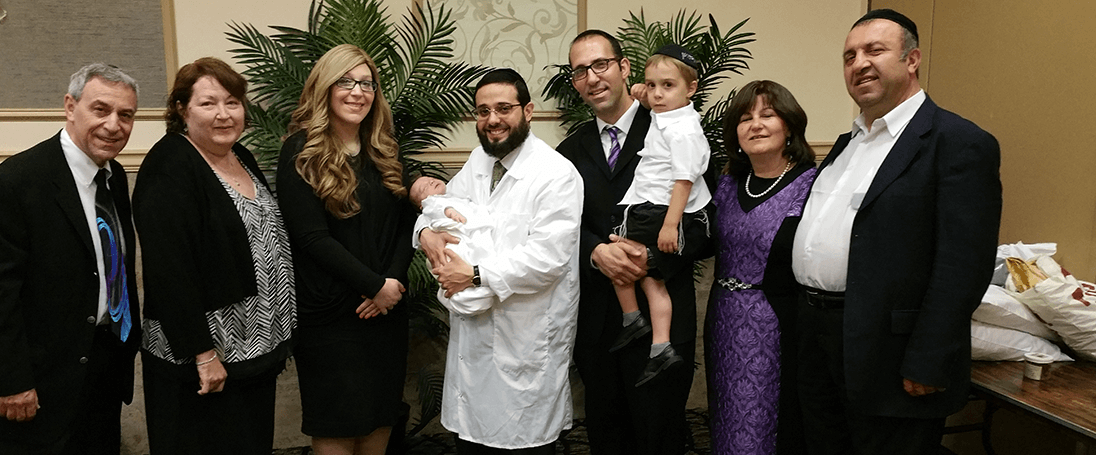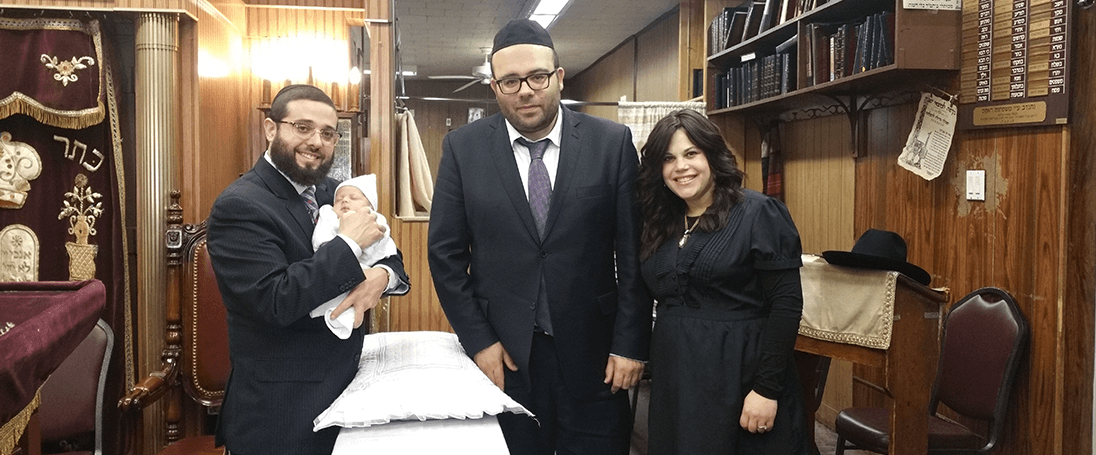
The Bris Milah ceremony traditionally takes place on the 8th day following the boy’s birth. This custom is of utmost importance to observe if the baby’s health is not in question. In keeping with all traditions, the certified and skilled Mohel has presided Bris Milah ceremony in NYC over the years. Feel free to contact the Mohel any time and appoint the day for circumcision. You can easily find your way to us from any New York City boroughs.
Let us tell you more about circumcision in Synagogues and private homes in NY.
The Mohel (“the circumciser”) will arrive from 15 to 30 minutes prior to the Bris to examine the baby and review the ceremony with the parents. The Bris is comprised of three parts.
Stages of Bris Ceremony
Following this, the father then recites the blessing to bring the baby into the holy covenant of Abraham. The baby is then placed with an honored guest while the Bracha – blessing on the wine of Bore Pri Hagefen – is said. The Bracha of Kores Habrit, the main blessing of the covenant of the love between God and the Jewish people, is declaimed after that. In conclusion, all in attendance ask God to bestow the everlasting protection upon His beloved nation.

Many wonder what will be done with the removed foreskin. Customarily it is placed in sand or earth. Parents can do this in the yard of their home and even mark the spot with a tree. As this tree grows, a branch may be used in the Chuppah ceremony during the child’s wedding.
The Bris ceremony is a Mitzvah that is done with tremendous happiness. Bris Milah is a sign that we have an unbreakable bond with our Creator. The Bris Milah is our badge of honor that we are part of the Jewish nation that has a permanent bond with Hashem. It is for this reason that the bris in NY is done with such enthusiasm.
Selecting the Right Venue for the Brit Milah
When it comes to the Brit Milah ceremony, selecting a proper venue for performing the circumcision is crucial. Depending on the parents’ priorities, the procedure can be held at home or a synagogue. If you are still at a loss over what venue is the best for your little prince’s milestone, take a look at the following tips:
- Your home should be spacious enough to accommodate all your guests with comfort. Select the room with proper lighting, prepare a large sturdy table and a white or pale blue tablecloth for the ceremony.
- A bris at home saves you traveling and brings comfort to your baby before and after the procedure.
- Once you have selected a synagogue venue, you don’t need to worry about preparing furniture and other items for the Brit Milah ritual you may not have within reach.
- The procedure is frequently scheduled early in the morning at a synagogue. In some cases, it may be performed later in the day. Parents and their guests should dress properly for the place.
Whether you select a synagogue or your home space for the bris, rest assured that the Mohel will take all the essential steps to keep this meaningful ritual as safe and painless for a baby as possible.